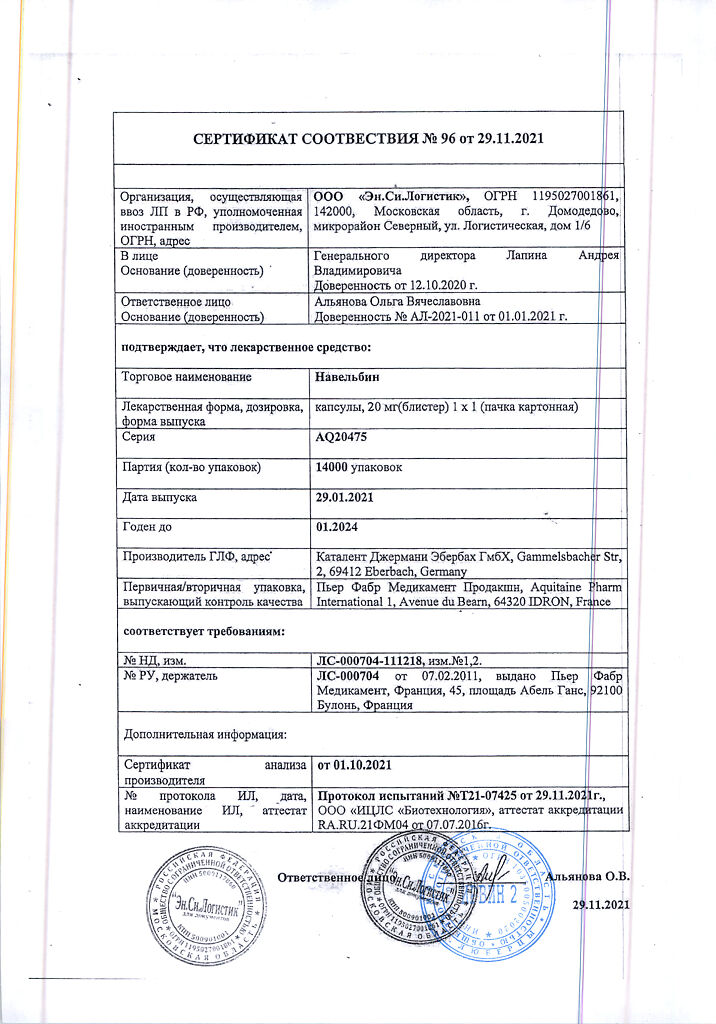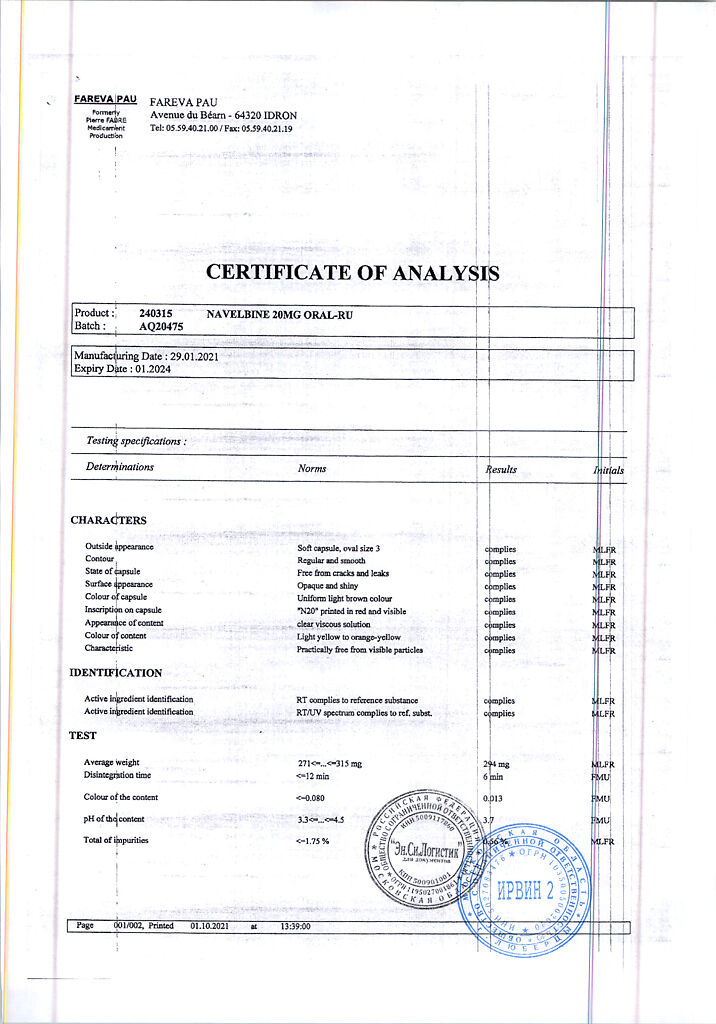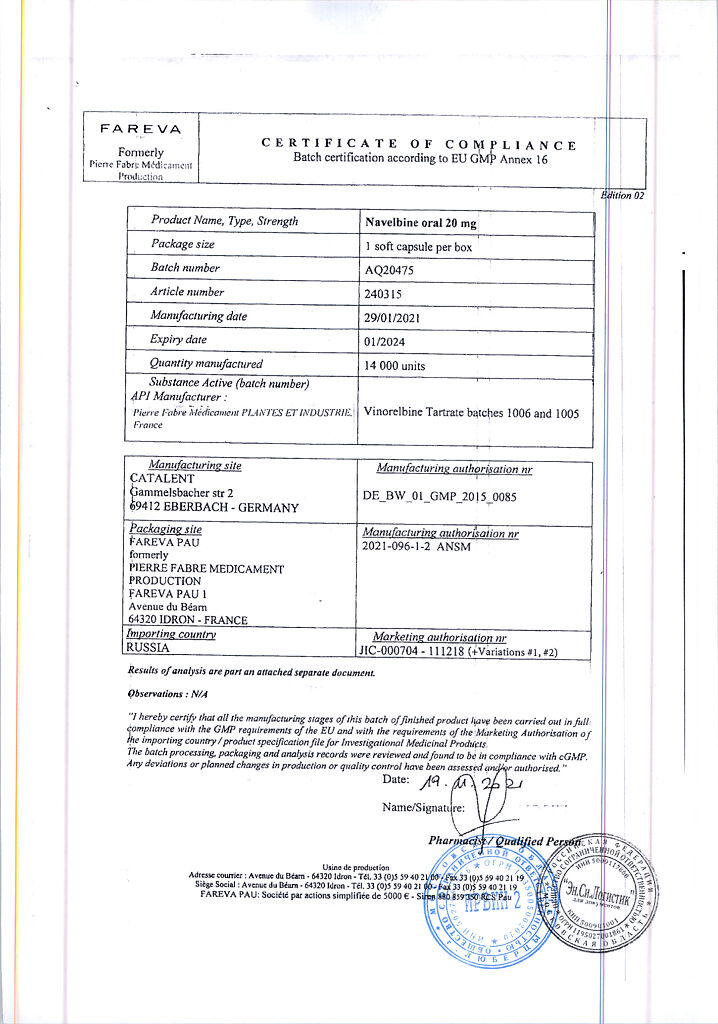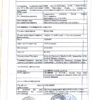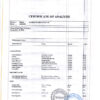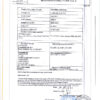No products in the cart.
Description
Pharmacodynamics
Antitumor drug from vincaalkaloids group (alkaloid of pink periwinkle obtained by semi-synthetic way). The preparation blocks cell mitosis at G2-M metaphase stage, causing cell death during interphase or during subsequent mitosis.
At the molecular level it affects the dynamic equilibrium of tubulin in the microtubule apparatus of the cell. Navelbine inhibits tubulin polymerization by binding predominantly to mitotic microtubules, and in higher concentrations it also affects axonal microtubules. Induction of tubulin spiralization under the action of Navelbine is weaker than with vincristine.
Pharmacokinetics
Intake and distribution
After oral administration, it is rapidly absorbed from the gastrointestinal tract. Cmax of vinorelbine is reached after 1.5-3 hours. Absolute bioavailability is on average 40%. Food intake does not affect the degree of absorption.
After IV administration the kinetics of vinorelbine is a three-phase exponential process.
The binding to plasma proteins is 13.5%. Intensively binds to blood cells and especially to platelets (78%). It penetrates into the tissues well and stays in them for a long time. High concentrations of vinorelbine are detected in the spleen, liver, kidneys, lungs and thymus gland, moderate – in the heart and muscles, minimal – in adipose tissue and bone marrow. Concentration in lungs is 300 times higher than in plasma. It does not penetrate through the BBB.
Metabolism and excretion
It is biotransformed in liver, mainly under the action of CYP3A4 isoenzyme with formation of several metabolites; basic one, detectable in blood is diacetylvinorelbine, which preserves antitumor activity. It is excreted mainly with the bile. Mean T1/2 in the terminal phase is 40 h (27.7-43.6 h).
Pharmacokinetics in Special Clinical Cases
The pharmacokinetic parameters of Navelbine (administered at a dose of 20 mg/m2 weekly) are independent of patient age and do not change with moderate to severe hepatic impairment.
Indications
Indications
Active ingredient
Active ingredient
Composition
Composition
1 capsule contains:
Active ingredients:
Vinorelbine tartrate 41.55 mg, which corresponds to a vinorelbine content of 30 mg.
Auxiliary substances:
Ethanol anhydrous – 7.5 mg,
Purified water – 18.75 mg,
Glycerol – 3 mg,
Macrogol 400 – q.s. to 262.5 mg.
Composition of the capsule shell:
. Gelatin, glycerol 85%, anidrisorb 85/70 (D-sorbitol, 1,4-sorbitan, mannitol, higher polyols), medium-chain triglycerides PHOSAL 53 MST (phosphatidylcholine, glycerides, ethanol), iron oxide red (E172), titanium dioxide (E171).
In a blister of 1 capsule. The pack contains 1 blister.
How to take, the dosage
How to take, the dosage
Navelbine is used both as monotherapy and in combination with other anticancer drugs. When choosing the dose and mode of administration in each individual case the special literature should be consulted.
Navelbin concentrate is administered strictly intravenously as a 6-10 minute infusion.
The capsules are taken orally whole with water without chewing or mashing them in the mouth.
In monotherapy, the usual dose of the drug for IV administration is 25-30 mg/m2 of body surface once a week. Navelbine is diluted in 0.9% sodium chloride solution or 5% dextrose solution to a concentration of 1.0-2.0 mg/ml (50 ml on average). After the drug is injected, the vein should be flushed with at least 250 ml of additional 0.9% sodium chloride solution or 5% dextrose solution.
In patients with a body surface area of 2 m2 or more, a single dose of Navelbine for IV administration should not exceed 60 mg.
The recommended starting single dose of Navelbine for oral administration is 60 mg/m2 body surface area once a week. After the third dose, the dose should be increased to 80 mg/m2.
A dose increase from 60 mg/m2 to 80 mg/m2 may be implemented if there has been no grade 4 neutropenia (less than 500/µL) for three weeks of Navelbine administration or there has been one episode of grade 3 neutropenia (less than 1000/µL but greater than 500/µL) and the neutrophil count before the next intake is at least 1500/µL.
The minimum neutrophil count (cells/μL) recorded in the first 3 weeks of oral administration of Navelbine at a dose of 60 mg/m2 per week
The minimum neutrophil count (cells/μL) recorded in the first 3 weeks of oral administration of Navelbine at a dose of 60 mg/m2 per week
>1000
⥠500 and
⥠500 and
Recommended dose starting on the 4th dose
80 mg/m2
/p>
60 mg/m2
If a dose of 80 mg/m2 of Navelbin causes grade 4 neutropenia (less than 500/mL) or 2 cases of grade 3 neutropenia (less than 1000/mL but more than 500/mL), the dose of Navelbin should be reduced from 80 to 60 mg/m2 per week at the next 3 doses.
The minimum neutrophil count (cells/μL) recorded in the first 3 weeks of oral administration of Navelbine at a dose of 80 mg/m2 per week
>1000
⥠500 and
⥠500 and
< 500
Recommended dose starting on the 4th dose
80 mg/m2
60 mg/m2
/p>
If the neutrophil count has not decreased below 500/mL, or more than one decrease in neutrophil count between 500 and 1000/mL has not been observed over three weeks of a 60 mg/m2 dose of Navelbine (as recommended above), the dose can be increased again from 60 to 80 mg/m2 per week.
The recommended oral doses of Navelbine as a function of patient body surface area (BSA) are shown in the following table.
Body surface area (m2)
60 mg/m2
80 mg/m2
Dose (mg) per week
0.95 to 1.0
60
1.05 to 1.14
70
1.15 to 1.24
70
1.25 to 1.34
80
1.35 to 1.44
80
1.44 to 1.54
90
1.55 to 1.64
1.65 to 1.74
100
1.75 to 1.84
110/p>
1.85 to 1.94
110
1.95 or more
120
For patients with a BSA of 2 m2 or more, the total single oral dose of Navelbine should never exceed 120 mg per week at a dose of 60 mg/m2 and 160 mg per week at a dose of 80 mg/m2.
The oral administration of Navelbine at doses of 60 mg/m2 and 80 mg/m2 is consistent with the intravenous administration of Navelbine at doses of 25 mg/m2 and 30 mg/m2.
In polychemotherapy, the dose and frequency of administration of Navelbine (both IV and oral) depends on the specific antitumor therapy program.
If the neutrophil count is less than 1,500/μL or platelet count is less than 75,000/μL (IV) or less than 100,000/μL (oral), the next dose or oral administration of Navelbin should be delayed for 1 week. If 3 weekly injections or ingestions of Navelebin have to be withheld because of hematologic toxicity, it is recommended that Navelebin be discontinued.
In patients with severe hepatic impairment, Navelbine should be administered with caution, at a dose reduced by 33%.
The safety and effectiveness of Navelbine in children has not been studied.
Particular adjustments to the dosing regimen of Navelbine in the elderly are not necessary.
Interaction
Interaction
When co-administered with other cytostatics there may be mutual exacerbation of side effects, primarily myelosuppression.
In co-administration with mitomycin C acute respiratory failure may occur.
In co-administration with paclitaxel the risk of neurotoxicity increases.
The use against a background of radiation therapy leads to radiosensitization. The use of Navelbine after radiation therapy may lead to the reappearance of radiation reactions.
The concomitant use of the drug with inducers and inhibitors of cytochrome P450 isoenzymes may lead to changes in pharmacokinetics of vinorelbine.
Special Instructions
Special Instructions
Treatment with Navelbine should be done under the supervision of a physician experienced in the use of antitumor drugs.
The dose of Navelbine should be reduced by 33% if liver function is severely impaired.
In case of impaired renal function, the patient’s condition should be monitored.
In case of signs of neurotoxicity of grade 2 or higher, the use of Navelbine should be discontinued. If dyspnea, cough, or hypoxia of unknown etiology occur, the patient should be evaluated to rule out pulmonary toxicity.
If extravasation occurs, the drug infusion should be stopped immediately and the remaining dose administered in another vein.
If nausea or vomiting occurs after taking Navelbine capsules, the same dose should not be taken again.
During and for at least three months after discontinuation of therapy, reliable contraceptive methods should be used.
If the active ingredient comes into contact with the oral cavity, it is recommended to rinse the mouth with water or any saline solution.
In case of contact of Navelbine with the eyes, they should be rinsed abundantly and thoroughly with water.
Because the drug contains sorbitol, Navelbine should not be used in patients with hereditary fructose intolerance.
Laboratory monitoring
The drug is monitored under close hematologic control, with the number of white blood cells, neutrophils, platelets and hemoglobin determined before each repeated injection or oral administration. In case the number of neutrophils is less than 1500/μl and/or the number of platelets is less than 75 000/μl (for intravenous injection) or less than 100 000/μl (for oral intake) the next dose of the preparation is delayed until the normalization of these parameters and the patient’s state is controlled simultaneously.
Contraindications
Contraindications
Side effects
Side effects
The following adverse events occurred more frequently than in isolated cases. The following criteria were used to assess the frequency of adverse events:
With the hematopoietic system: very often – neutropenia, anemia, thrombocytopenia, accession of secondary infections against the background of inhibition of medullary hematopoiesis; often – fever (38°C) against the background of neutropenia; sometimes – sepsis, septicemia; extremely rare – complicated septicemia, in some cases leading to death. The lowest number of neutrophils is observed on days 7-10 from the start of therapy, recovery occurs in the next 5-7 days. No cumulation of hematotoxicity has been observed.
Peripheral nervous system disorders: very often – paresthesias, hyperesthesia, decrease or loss of deep tendon reflexes; often – weakness in legs; sometimes – severe paresthesias with sensory and motor symptoms, usually of reversible nature.
The cardiovascular system: sometimes – increase or decrease of BP, hot flashes and coldness of the extremities; rarely – CHD (angina, myocardial infarction), marked hypotension, collapse; very rarely – tachycardia, palpitation, cardiac pacing.
Respiratory system: sometimes – dyspnea, bronchospasm; rarely – interstitial pneumonia (in combined therapy with mitomycin), acute respiratory distress syndrome.
Digestive system disorders: very frequently – nausea, vomiting, stomatitis, constipation, diarrhea, transient increase of liver function tests (ALT, ACT); rarely – pancreatitis, increased bilirubin level, paresis of bowels.
Intrinsic system disorders: rarely – anaphylactic shock and angioedema.
Dermatological reactions: often – alopecia; rarely – skin rash.
Local reactions: often – pain/burning or redness at the injection site, discoloration of the vein, phlebitis; in extravasation – cellulitis; possibly – necrosis of the surrounding tissues.
Others: often – fatigue, myalgia, arthralgia, fever, pain of different localization, including chest pain, pain in the lower jaw and in the area of tumors; rarely – hyponatremia; very rare – hemorrhagic cystitis and syndrome of inadequate secretion of ADH.
Overdose
Overdose
Symptoms: suppression of bone marrow function, neurotoxic reactions.
Treatment: in case of overdose the patient should be hospitalized; symptomatic therapy with careful monitoring of the functions of vital organs is carried out. A specific antidote is not known.
Pregnancy use
Pregnancy use
Navelbin is contraindicated in pregnancy and during lactation (breastfeeding).
Additional information
| Shelf life | 2.5 years |
|---|---|
| Conditions of storage | In a light-protected place, at 2-8 °C |
| Manufacturer | Pierre Fabre Medical Production, France |
| Medication form | capsules |
| Brand | Pierre Fabre Medical Production |
Related products
Buy Navelbine, 20 mg capsules with delivery to USA, UK, Europe and over 120 other countries.


